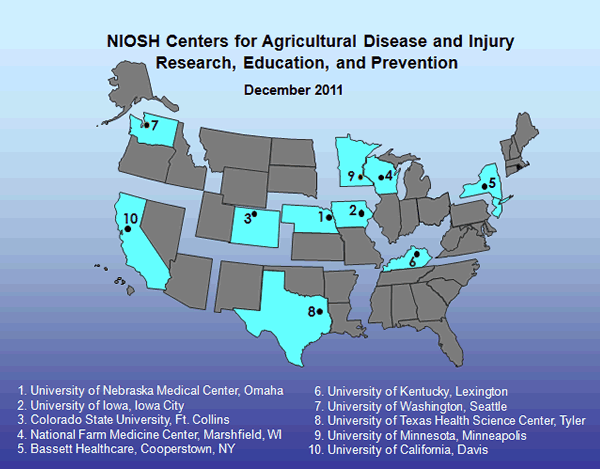
A prime example of the sort of education and outreach that must be conducted in regards to combustible dust fires and explosions in the manufacturing sector workplace would be to review the NIOSH Safety and Health Topic on Agriculture. The Centers for Agricultural Disease and Injury Research, Education, and Prevention is an excellent example of how NIOSH and stakeholders have worked collaboratively together in their efforts to minimize fatalities and injuries in the agricultural sector. Isn't manufacturing just as important to the economic security and vitality of our nation?
The National Agricultural Safety Database (NASD) is another prime example in educating workers so as to minimize the probability and reduce the severity of consequence of workplace incidents. This diverse database contains a myriad of educational materials, which includes fact sheets, training materials, PowerPoint presentations, and videos. Additionally,this superb resource is interactive and provides information in Spanish and other languages. So why doesn't OSHA provide similar information on combustible dust hazards to American workers?
Over the past several years, hundreds of thousands of dollars have been awarded in the OSHA Susan Harwood Grant program for combustible dust training, yet none of these training resources are available online for stakeholders in the manufacturing sector. Instead OSHA inspectors have received specialized training on combustible dust so as to issue citations in their inspection and enforcement activities.
Recently the OSHA Combustible Dust NEP status report illustrated this weakness of where business owners were not knowledgeable about OSHA General Industry Standards in regards to combustible dust. For example, 90% of citations where for General Industry Standard violations such as hazard communication, housekeeping, powered industrial trucks, and PPE. Wouldn't educating these stakeholders on combustible dust hazards like the training OSHA inspectors recently received been more appropriate?
It's time that the OSH Act is brought back as the Congress mandated where OSHA is required to work in concert with NIOSH in protecting the entire nation's workforce from fatalities, injuries, and illnesses. Solely directing the main emphasis to strong enforcement with costly citations without including the outreach and educational aspect is not a productive path in maintaining a strong manufacturing economic sector.
Saturday, January 2, 2010
Combustible Dust Outreach, NIOSH Agriculture Example
Subscribe to:
Post Comments (Atom)










 RSS Feed Subscribe
RSS Feed Subscribe
1 comment:
John, Excellent article and comment on the status of OSHA and possible beneficial solutions for the manufacturing sector. Jeff Nichols
Post a Comment